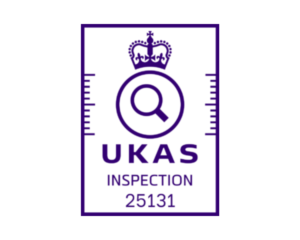As the established trade association and training body for the safety netting and temporary safety systems industry, FASET aims to always keep up to date with the latest news from the building access industry. We are pleased to report that the Royal Institution of Chartered Surveyors (RICS) is reaching out via consultation to both its 130,000 members and those working in the built environment worldwide, to provide feedback on the second edition of its influential Professional Standard RICS Whole Life Carbon Assessment for the Built Environment.
The methodology is currently endorsed and adopted by several governments, leading industry bodies and supranational organisations including the World Economic Forum.
The updated methodology, designed to be used by its more than 130,000 members worldwide, was first developed in 2017. This updated version of the RICS standard, will provide a consistent approach to calculating whole-life carbon emissions within the built environment. This new edition is more ambitious as it extends to cover all built assets and infrastructure, throughout the whole built environment life cycle. Only by accurately measuring and recording carbon emissions can the industry work to meet net zero goals to confront this planet-wide challenge and developing and deploying this methodology, is crucial for supporting the built environment sector and the world in their aim to achieve Net Zero emissions by 2050.
Carbon reporting and accounting is a priority across all sectors, and this ‘Professional Standard’ is relevant not only to those undertaking carbon assessments, but also to clients, investors and property managers. All those in the industry who are providing, receiving and relying upon the measurement of carbon within the built environment should respond to this critical consultation.
The built environment contributes to 43% of all greenhouse gas emissions, making reductions within the industry vital for protecting the earth from its impact. The RICS whole-life carbon assessment will track all carbon emissions from production of materials, construction process, use and the disposal of built assets over their entire life cycle. The ‘standard’ enables the industry to hold reliable data on carbon output, which will help them to set and meet targets, and improve its ability to reduce harmful environmental impacts.
The current edition of the document is used in the early design stages of many building projects and continues to influence government policy. In the UK, a Net Zero Carbon Building Standard is being created with the intent to incorporate the RICS Whole Life Carbon Assessment Professional Standard’s methodology to assess upfront, embodied, operational, user and whole-life carbon. RICS hopes that more governments will adopt the standard in their work to tackle climate change impacts, with the second edition acting as a catalyst for wider adoption.
RICS President, Ann Gray, said: “RICS calls on the global built environment community to engage with this crucial consultation on Whole Life Carbon Assessment. The built environment contributes significantly to global carbon output, and RICS’ is committed to supporting the real estate industry in meeting the challenge of net zero head on.
“Our greatest asset is our members; their knowledge and experiences are second-to-none. This consultation is a historic opportunity for all of us to shape the sector’s response to the global challenge of climate change and make a profoundly positive difference to our planet.
“The international scope of this consultation will enrich the breadth and diversity of insight we gain. This is important as we recognise that nations and their respective built environment sectors are at different stages in their response to the climate crisis. The global nature of our consultation will ensure that the final output is capable of adoption around the world while retaining its role as the principal methodology recognised in the UK.”
The consultation will provide opportunities for professionals working in the built environment across the globe to comment directly on the proposed text, respond to a questionnaire, and participate in focus groups. We invite those in the industry who are providing, receiving and relying upon the measurement of carbon within the built environment to respond to this critical consultation.
Image: Shutterstock









